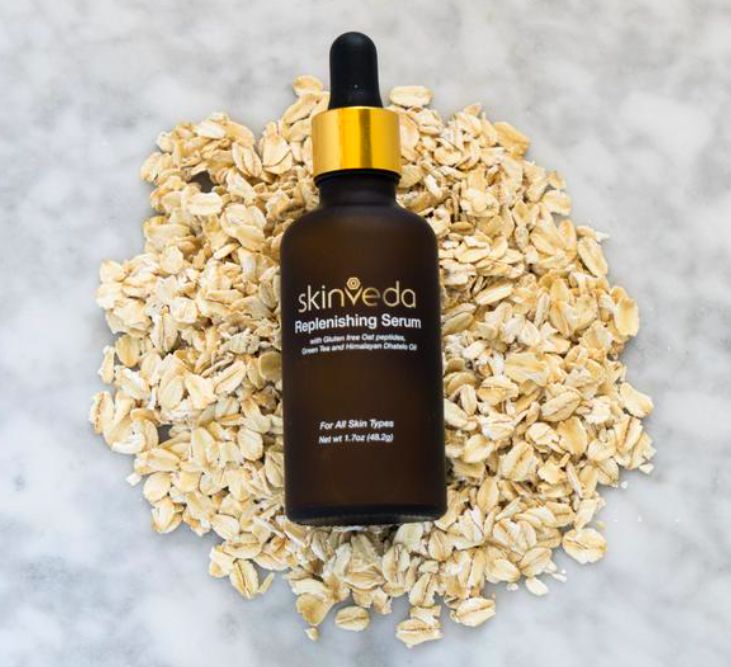
Shilpi Jain Explores The World Of Ayurvedic Skincare
Ayurveda is coming to skincare aisles.
In beauty, what’s ancient is new again. Ayurveda, the Indian healing system dating back more than 5,000 years that connects the mind and body, is coming to skincare aisles as women incorporate time-tested solutions into their beauty routines. “It’s relevant now because chronic stress is increasing. Ayurveda is about listening to your mind and body cues for optimal health. It’s not just about the absence of disease,” says Shilpi Jain, president and founder of Skinveda, and SASA Cosmetics and Consulting. “I pursued a brand with the main idea being how to deal with stress and the manifestations of stress on your skin. When we go to the store, we see so many natural lines talk about oily, dry and combination skin, but not what kind of skin you have based on your mind-body constitution or lifestyle.” While Ayurveda is appealing to Americans searching for alternatives to conventional beauty products, Ayurvedic concepts remain relatively unknown to most domestic consumers. Beauty Independent turned to Jain for a tutorial on the application of Ayurvedic ideas to modern skincare practices.
SKINCARE CATEGORIES FOR THE DOSHAS
Ayurvedic principles revolve around three doshas or energies that define a person’s physical and mental makeup. The three doshas, which are derived from the five elements, are vata, pitta and kapha. Vata refers to qualities reflecting space and air. Vata types tend to be thin and tall, nervous and show early signs of aging, according to Jain. Comparing a vata dosha to a customary Western skincare category, she converts it to the dry, sensitive skin category. Pitta involves fire and water attributes. Pitta types are athletically-inclined perfectionists. Jain explains they get easily outraged, and their skin burns quickly. They require cooling formulas. Jain groups pitta skincare treatments into the combination skincare segment. Kapha indicates water and earth characteristics. Jain details kapha types are grounded, steer clear of conflicts and internalize emotions. She says they’re prone to congested pores and need detoxifying skincare remedies. Kapha products are classified as oily skin products. To help people determine their dosha, Skinveda walks them through a five-question vikruti quiz that asks whether they are experiencing anxiety, overheating, weight gain, misery in inclement weather and anger. Vikruti means imbalance. “Once we are able to identify imbalances, we can a recommend a skincare regimen to balance the problems that someone has with their skin that are manifestations of lifestyle factors and stress levels,” says Jain, emphasizing, “Retailers should consider Ayurvedic brands the future of skincare because personalization is the new black.”

Ayurvedic SKINCARE ON THE INSIDE
Ayurvedic herbs and fruits used in skincare formulas include turmeric, neem, ashwagandha, coconut, amla or Indian gooseberry, and tulsi, which is often called holy basil. “A lot of people are impressed by Ayurvedic herbs, and they think they can just put a few of these herbs together and make a product,” says Jain. “Honestly, that’s not doing justice to Ayurveda. It’s more than that. It requires knowledge and understanding of the physiology of the body and of these herbs.” Jain advises that potent forms of the Ayurvedic herbs and fruits should be chosen for skincare. She relies on freeze-dried coconut powder to ensure ingredient potency, for example. Aside from their potency, Jain points out the manner in which herbs and fruits are combined is important. Certain herbs don’t work together. She notes, “Neem is one of my favorites. It has so many beneficial properties, but you have to be careful because it can interfere with other herbs and, instead of benefiting the skin, it can have a negative effect.” In addition to properly combining the herbs, she underscores the delivery systems are critical to get right in Ayurvedic skincare blends. “They are extremely heavy molecules,” Jain explains. “The way I deliver these compounds into the skin is through a lot of gel matrices, natural gels and gums along with encapsulation so there is a slower release of the herbs over time.”

Shopping Ayurvedic SKINCARE AT STORES
Skincare shoppers shouldn’t blindly buy into Ayurvedic skincare. Jain suggests they scrutinize skincare product ingredient decks. “Consumers can be misled into buying something with really good PR on Ayurveda if they don’t read the label,” she says. “I encourage them to read the label and do their due diligence on products.” She specifies they should study the first five ingredients on skincare product labels and make certain those aren’t synthetic ingredients. Jain also cautions consumers to avoid Ayurvedic skincare products with extremely lengthy ingredient decks. “It’s about less is more,” she says. “If you see too many ingredients, they are probably putting in a drop of this or that to confuse the consumer.” Lastly, Jain counsels shoppers to investigate the people behind the products. Are they Ayurveda experts or opportunists hopping onto a trend? “Does the person have knowledge about what they are talking about? Consumers need to look into the principles of the brand and where it comes from,” she says. “I try not to be persuaded by the marketing. I like to do my own homework.”






Leave a Reply
You must be logged in to post a comment.